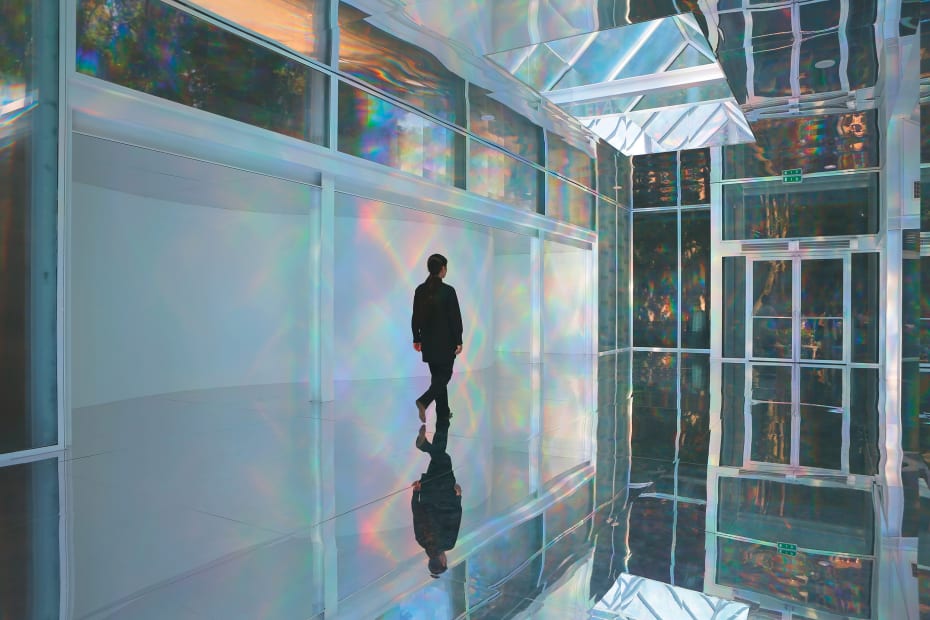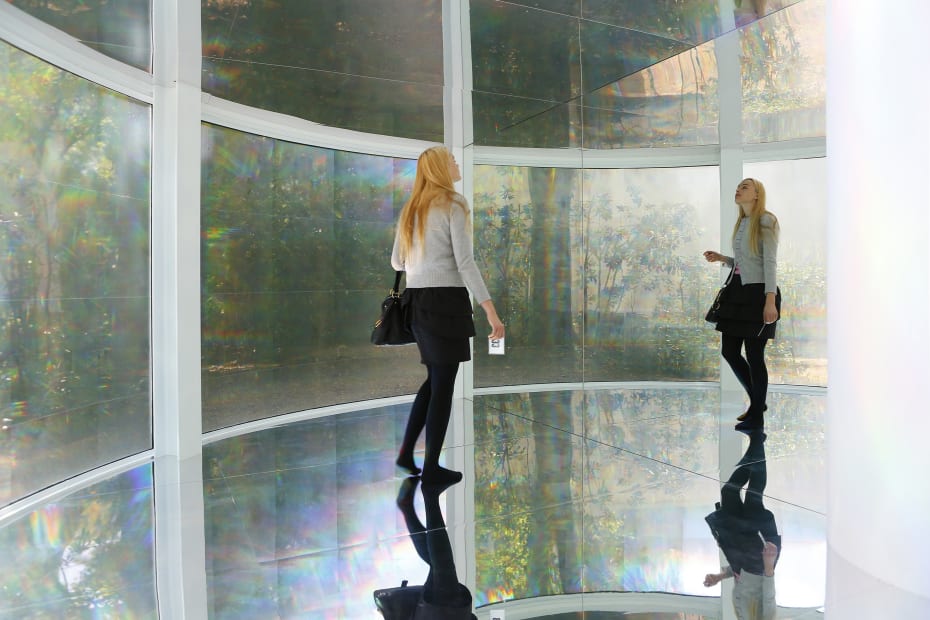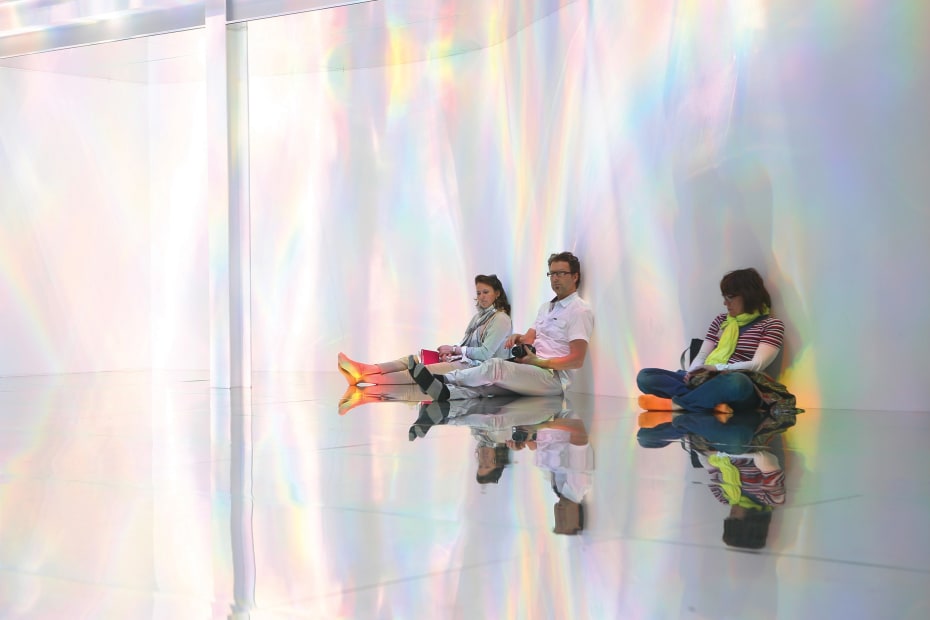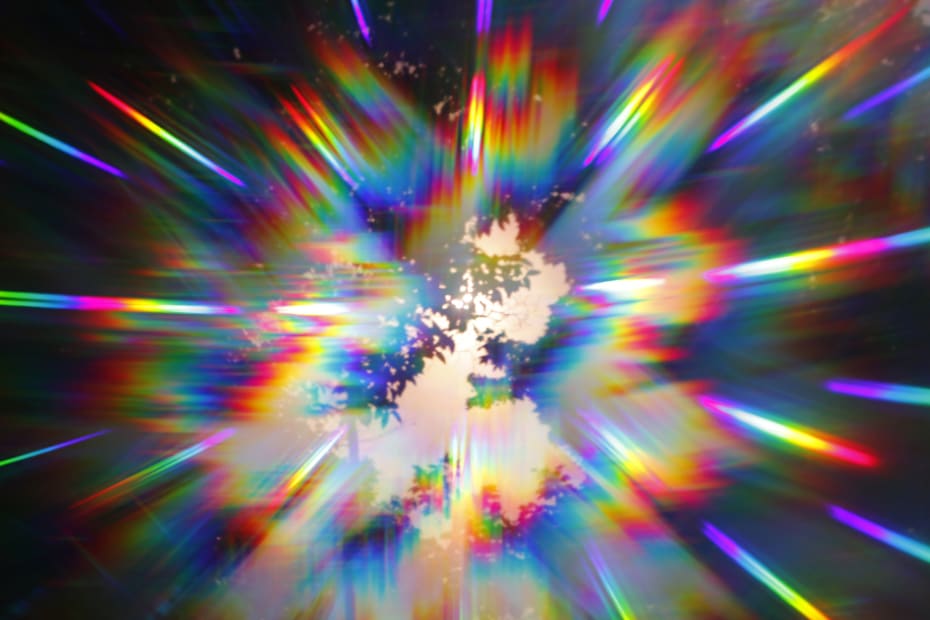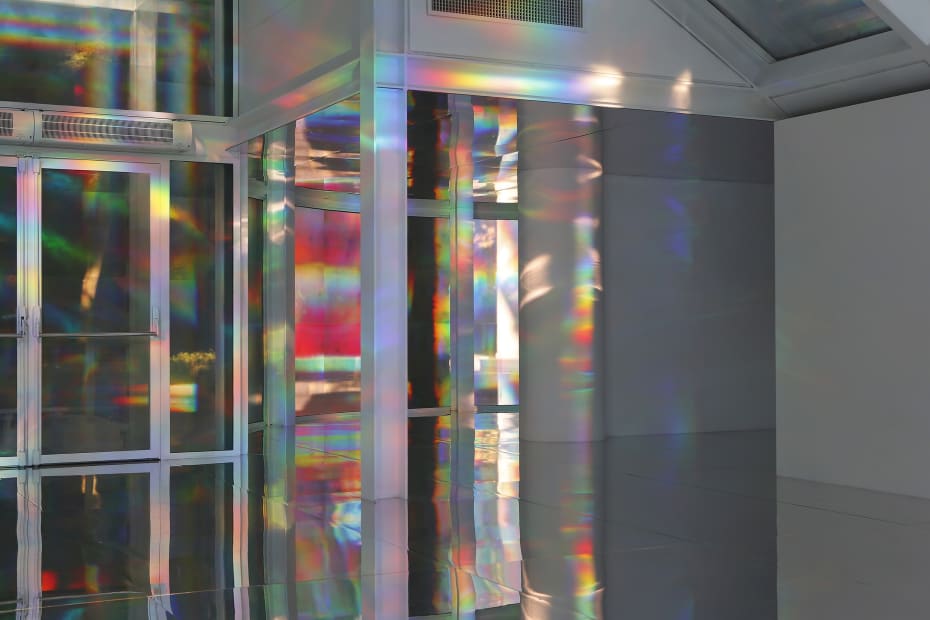Kimsooja: To Breathe: Bottari: Korean Pavilion: 55th International Art Exhibition - la Biennale di Venezia
The notion of bottari (bundle) as a whole and totality and the concept of sewing have been the central components of Kimsooja’s work for over three decades. Posing various questions about the formal aspects of tableau, sculpture, object and installation; bottari encompasses issues of body, self and others and the relationship of yin and yang to life and death. Bottari explores problems of location and dislocation; migration; exile; and war, while posing existential and cognitive questions in space and time.
Approaching the architecture of the Korean Pavilion as a bottari, the artist has wrapped the division between nature and the interior space with a transluscent film. Treating the windows as the skin of the pavilion, the film diffracts the natural sunlight as it showers the interior space with rainbow spectrums of light.
The intensity of the light in the pavilion will correspond to the daily movement of the sun rising to its setting across the Korean Pavilion— which is located right next to the Laguna di Venezia—transforming the space into a transcendental experience—folding and unfolding the
phenomenon of light.
To Breathe: Bottari presents the empty space of the Pavilion, inviting only the bodies of the audience to encounter the infinite reflections of light and sound. The artist’s amplified inhaling, exhaling and humming performance sounds (The Weaving Factory, 2004-2013) fill the air, transforming the pavilion into a breathing bottari.
Simultaneously, the artist extends the experience of light and sound by creating an anechoic chamber. A space in complete darkness that absorbs all audio waves, leaving nothing but the sound of the viewer’s own body, To Breathe: blackout (2013) creates a soundless dark void of infinite reflection of self: a black hole.
The artist invites audiences to be the live and active performers, experiencing a personal sensation and awareness that reveals the extremes of light and darkness ; sound and soundlessness ; the known and the unknown. This installation questions visual knowledge as the known and darkness as the unknown- that originates from human ignorance- through two visual extremes that are connected as part of a whole.
The Korean Pavilion will become a physical and psychological sanctuary, questioning the conditions of civilization in this era.
Courtesy of Kimsooja Studio
Photo by Jaeho Chong
